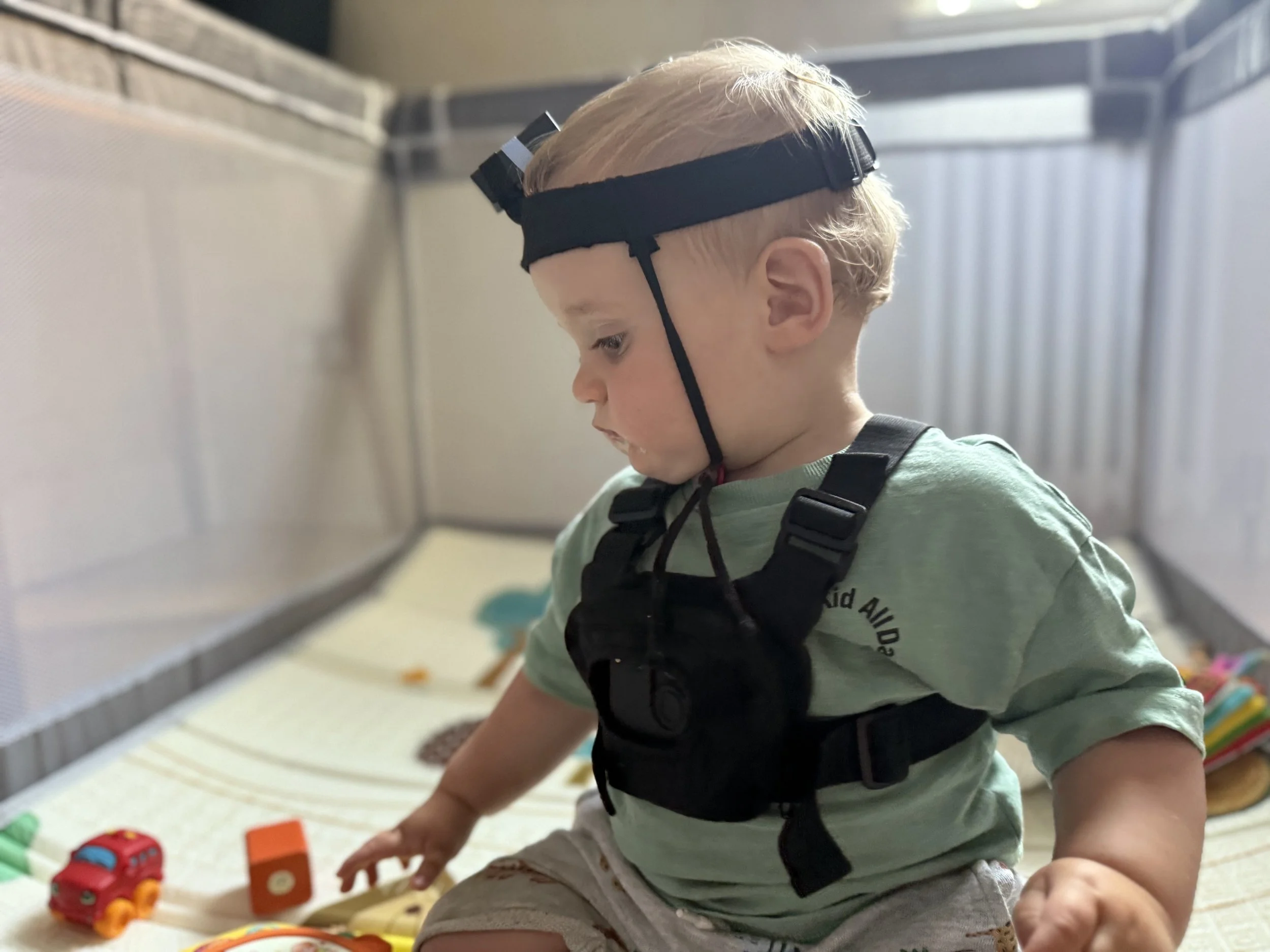RESEARCH
METHODS
At ISEY, we have pioneered the development of new methods to track what children experience, and how they respond to these experiences, in real time.
We use these methods in research, and consultancy and evaluation for industry, charity and educational organisations.

Wearables
We have developed miniature wearable sensors, worn by the children and household members, that include cameras and microphones, heart rate sensor, position and movement sensors.
Read more about the hardware we use to make our recordings here.
Naturalistic brain recordings
We use brain recordings during naturalistic, free-flowing parent-child interactions that are as close to real-world experiences as we can make them. To record brain activity we use EEG, which records electrical activity levels at the surface of the brain, and fNIRS, which measures oxygen consumption in the outer layers of the brain.
Machine learning and AI.
Microphones and child-worn cameras capture low-level sound and light fluctuations; from these, machine learning and AI tools can automatically convert this into something meaningful - such as where the child is, what they are looking at, and so on. Read more about the machine learning and AI analyses tools that we use here.
Tracking what children experience and how they respond in real time.
Using child-worn cameras, microphones, movement sensors and physiological sensors we can also track how children are being influenced by, and responding to, individual features in their environment, in real time. You can read more about our work tracking children’s real-world behaviours here.
Learn more about our…








